How to feed roses in the fall: the best means
In order for home roses to survive the winter, they are not only pruned and covered, but also fertilized with mineral and organic fertilizers. If this is not done, the wintering of the flower garden will go poorly: the plants will freeze, wake up weakened and lethargic. When feeding, it is important to follow the preparation and application instructions. In this article we will consider in detail how to feed a rose for the winter and when to do it.
Why do roses need autumn feeding?
By autumn, garden soil is depleted and loses its nutritional properties. If you don’t fertilize roses, after winter they will be weakened and lack strength. for lush flowering for next year.
Autumn fertilizer for roses strengthens the root system and immunity, which allows them to survive the winter without disease and not freeze. A balanced diet protects against pests that wake up in the spring and destroy stems, leaves, roots and buds.
Types of feeding roses
For proper nutrition of roses, gardeners use root and foliar feeding.
In the first case, nutritional components are added by watering or embedding directly into the soil, in the second, the plants are sprayed with special products from a spray bottle.
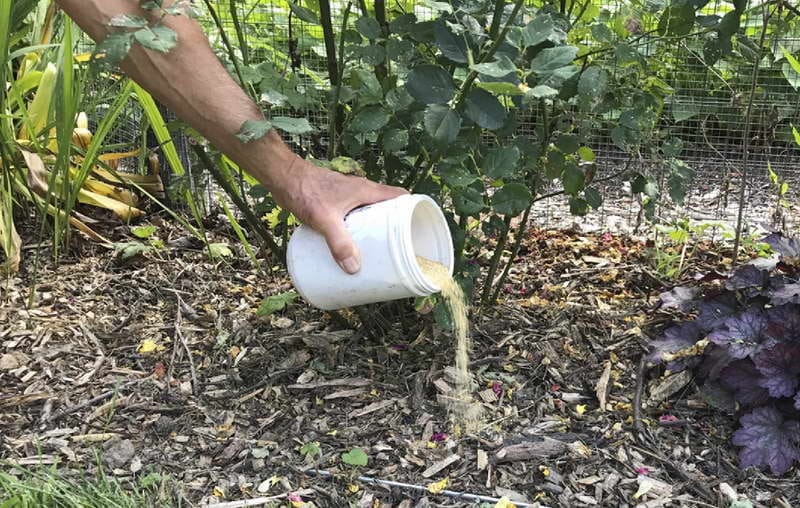
Root
Root feeding is used both when planting roses on the site and in the future. Gardeners use organic and mineral substances, preferring fertilizers in liquid form. They are absorbed faster and prevent chemical burns to the roots. Fertilizers are applied at the root or in holes located at a distance of 10 cm from the plant.
Attention! Granular root fertilizers are also popular. The granules are buried in the ground, and then the mineral components are slowly released from them. The advantage of this type of feeding is that the roses are fertilized over a long period of time.
Foliar
Foliar fertilizers are used during spring, summer and autumn. The plant absorbs vitamins and minerals not from its roots, but from its leaves and stems. Foliar fertilizers are popular because they can quickly replenish mineral deficiencies and strengthen the plant’s immunity. They are also often used not only to feed roses, but also to protect them from diseases and pests.
Foliar feeding is carried out only in the morning or evening, when there is no sun. This protects plants from sunburn. It is recommended to use a fine spray - the smaller the size of the sprayed particles, the more effective the procedure.
How to fertilize roses in the fall
To ensure that roses bloom magnificently and for a long time, gardeners use organic and mineral fertilizers. It is important to observe the interval between procedures, the conditions for their implementation and the recommended dosage. Excess feeding is just as dangerous for the plant as too little.
Organic fertilizers
To understand how to feed roses in the fall, gardeners first of all pay attention to organic compounds. They strengthen the root system, thanks to which rose bushes grow powerful and lush.
Organic materials used for roses include manure and bird droppings, onion peels and ash.
Ash
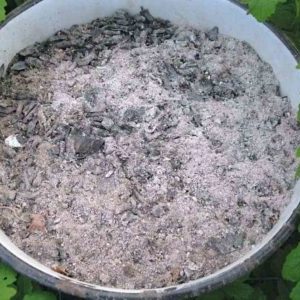
Ash is applied twice - at the beginning of flowering and in preparation for winter.. Roses are very fond of ash fertilizers. They contain phosphorus, which strengthens the root system, and potassium, which is responsible for the life of the plant and its immunity.
For roses, use the ash of plant waste or wood.Fertilizer is applied in liquid form - 200 g of ash is poured into 10 liters of water, stirred thoroughly and left for 7 days. Water the bushes on a windless morning.
Another quick way to feed roses with ash is to prepare a decoction. To do this, pour 1 kg of ash into 10 liters of water and boil for 20 minutes. 1 glass of solution is diluted with 5 liters of water and applied under the bush. If desired, boron or manganese is added to the fertilizer to compensate for the deficiency of microelements.
Attention! Ash is also used in dry form - pour 0.5 tbsp under each bush. Fertilizing protects the plant from pests, including snails, slugs, and aphids.
Compost
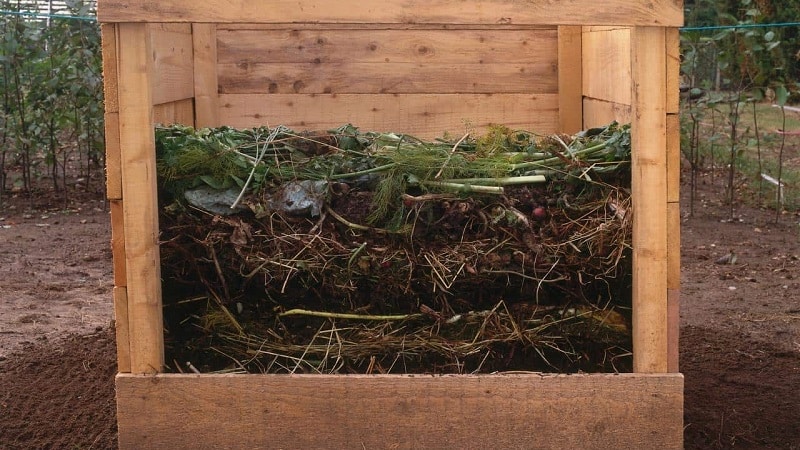
Compost for roses is prepared within 1-2 months - during this time the processes of oxidation, fermentation, and decay occur.. Flower growers prepare a compost mixture in a deep hole. Mix in it mown meadow grass and weeds without seeds, fallen leaves, peels from vegetables and fruits.
In mid-September, compost is laid in a thick layer around the bush. It also serves as mulch and protects roses from pests and rodents. When using this fertilizer, roses do not need other fertilizers.
It is not recommended to put dairy and fish waste, weeds with seeds, or plants with signs of diseases into the compost pit. Leaves of oak, poplar, and walnut should not be added to the compost - they contain substances that are dangerous to roses.
Onion peel
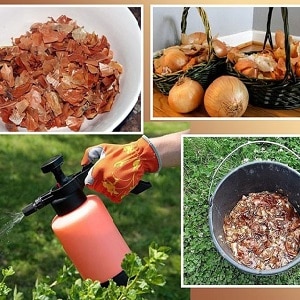
For fertilizer, an infusion of onion peels is used: 20 g is poured into 5 liters of water and left for 5 days in a dark place. Afterwards it is filtered and applied at the root or used for leaf processing.
Some gardeners use a decoction - 1 tbsp. mix with 10 liters of water, boil over low heat for 5 minutes, leave for 2 hours and filter. Use the fertilizer immediately after preparation; it is not suitable for long-term storage.
Onion peels are also used as an ingredient for making compost or simply buried in the ground under garden roses.
The husk slowly decomposes and improves the composition of the soil. It is also mixed with wood ash to create a nutritious fertilizer for flowers.
Manure

Rotted manure is used for roses. It is rich in nitrogen, phosphorus, calcium. Fertilizers based on manure strengthen plant stems and guarantee lush flowering next year.
Cow dung is most often used for roses; its composition suits them. 1 bucket of manure is filled with 20 liters of water and, if desired, a handful of ash is added.
Leave the fertilizer for a week, then dilute 1 liter of solution with 5 liters of water. Roses are watered at the root, 1 liter is needed per plant.
Attention! If cow manure is used as a dry fertilizer, bedding is added: sawdust, straw, peat. To increase the nutritional value of the fertilizer, it is placed in a wooden box until it turns into humus. This composition is also used for replanting roses to a new location.
Bird droppings

Bird droppings contain potassium, phosphorus, nitrogen, manganese, zinc, and iron. There are several ways to use fertilizer. First — preparing liquid fertilizer from fermented manure. Requires 10 liters of dried chicken manure and 20 liters of water. The ingredients are mixed in a barrel or basin, covered with a lid and left for 2 weeks. Next, the resulting solution is diluted with water in a ratio of 1:2 and applied under the bush.
The second method of use is fertilizer for quickly feeding roses, for example, during periods of illness or falling leaves. Add 30 g of granulated manure to 10 liters of water and mix for half an hour.Use the prepared liquid immediately after preparation - water the roses at the root or in the holes. For greater effect, add a mixture of burdock and nettle to the solution.
Fertilizers with droppings are contraindicated for roses under 3 years of age and those that have had fungal or infectious diseases. diseases.
Eggshell
Eggshells are a source of calcium. Useful if roses lack this microelement or need to reduce the acidity of the soil. The crushed shells are added to the tree trunks of the bushes, making the soil lighter. For 1 sq. m requires about 2 tbsp. Before this, the shells are washed under water and dried to avoid an unpleasant odor.
The advantage of fertilizer is that it decomposes quickly. In addition to calcium, 100 g of shell contains 80 mg of potassium, 170 mg of phosphorus and 50 mg of iodine. Use fertilizer for roses older than 2 years.
Mineral fertilizers
Mineral fertilizers ensure proper plant development, balanced metabolism, and strong immunity.
They are useful throughout the growing season, including autumn, when gardeners prepare the plant for winter.
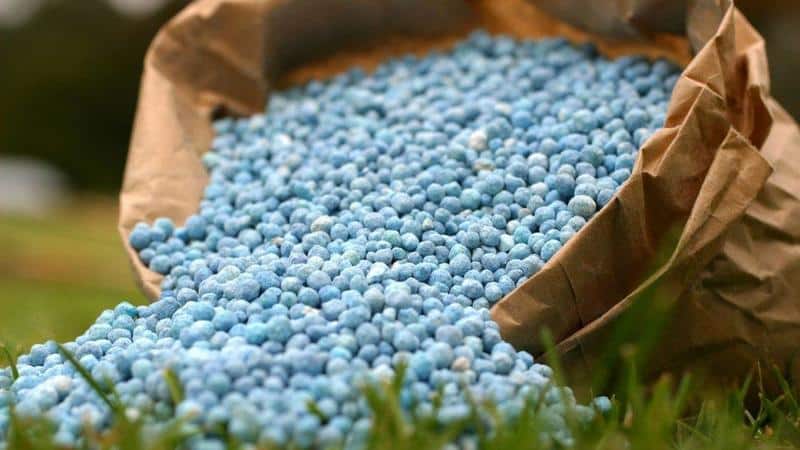
Potash
Potassium is responsible for strengthening the root system and immunity. With a microelement deficiency, the stems become thinner, the plant looks weakened, and the leaf blades dry out. Summer residents use potassium sulfate for feeding. The substance is light gray in color and is sold in hardware and garden stores. 30 g of potassium sulfate is dissolved in 10 liters of water and poured over 1 sq. m of tree trunk circle. The fertilizer is used on all types of soils, with the exception of acidic ones.
Strengthen the immunity of roses with the help of potassium carbonate. It is a white crystalline powder, suitable for any soil, including acidic ones.For root feeding, 40 g of potassium carbonate is diluted in 10 liters of water and applied under the bush. Before this, it is recommended to loosen the soil so that the fertilizer gets as deep into the ground as possible.
Attention! In addition to those listed, gardeners use other potassium fertilizers - potassium monophosphate, potassium magnesia, potassium nitrate. The solutions are watered around the tree trunk and the leaves are sprayed.
Phosphorus-potassium
Phosphorus-potassium fertilizers are considered the most useful. In addition to nitroammophoska and nitrophoska, gardeners use AVA fertilizer. Granular fertilizer increases resistance to weather factors and is easy to use. To prepare, 3 g of the substance is diluted in 1 liter of water and poured under the plant.
AVA is a long-acting fertilizer that retains nutritional properties in the soil for up to 3 years. Complex fertilizing is combined with other fertilizers and is environmentally friendly.
Phosphorus-potassium fertilizer "Atlanta" is effective. It reduces the content of harmful substances, helps strengthen the walls of the plant, and increases frost resistance. 50 g of the drug is diluted in 10 liters of water and sprayed on the roses leaf by leaf. The procedure also serves to prevent the appearance of root rot and downy mildew. Fertilizer is applied in early October.
Attention! Phosphorus fertilizers - superphosphate or bone meal - are also useful for roses in the fall. They are diluted in water and introduced into the tree trunk circle.
Nitrogen
Nitrogen fertilizers are applied in early spring. They are relevant in autumn only if the soil is severely depleted.
If you add nitrogen at the end of summer or autumn, the roses “get fat” - new green leaves and stems grow, and the buds do not wake up in time. Gardeners carefully use rotted manure or chicken droppings.You can also use a recipe for urea fertilizer - 1 tbsp. l. for 10 liters of water. The main thing is to remember that autumn is the most inappropriate time for nitrogen-containing fertilizers.
Important features of autumn feeding that need to be taken into account

Before applying fertilizer and immediately after, water the soil thoroughly. Water helps fertilizers dissolve and be absorbed faster. They also pay attention to weather conditions: the optimal temperature for applying fertilizers is at least +10°C.
When using mineral fertilizers, gardeners carefully study the preparation instructions and recommended proportions. The shelf life of fertilizers is also important. Some can be used immediately after preparation, others are stored for a couple of days or a week and do not lose their beneficial properties. Applying expired fertilizer is dangerous for the plant and soil.
A common mistake gardeners make is uneven distribution of granular fertilizers. In this case, the likelihood of a chemical burn increases, which can lead to the death of the entire plant. The granules are evenly distributed over the entire circle around the trunk, after which the rose is thoroughly watered.
Attention! Before applying fertilizers, carry out pruning - remove dry and diseased parts of the plant. This is a mandatory procedure for all regions of the country - the south, the Urals, Siberia, and the Moscow region.
Conclusion
Feeding roses in the fall includes the use of root and foliar, mineral and organic fertilizers. From organic matter, gardeners prefer eggshells, ash, rotted manure and onion peels; from minerals - potassium magnesia, potassium carbonate, Atlanta and AVA fertilizers.
It is recommended to apply fertilizers in liquid form, after watering the soil.Before winter, they build a shelter for the flower garden, for example, from film or wooden boards. Balanced nutrition and shelter help roses survive the winter safely.
A ROLLER ABOUT PROCESSING WITH COPPER OR IRON SULATE AND OTHER PREPARATIONS IS NEEDED. THANKFUL IN ADVANCE.
A video for processing Bordeaux mixture or vitriol is NEEDED.
We are looking, we don’t have anywhere to rent it ourselves yet. If you find it and share it, we will be happy to attach it to the article.
garden guide with Larisa Zarubina. everything is explained in great detail